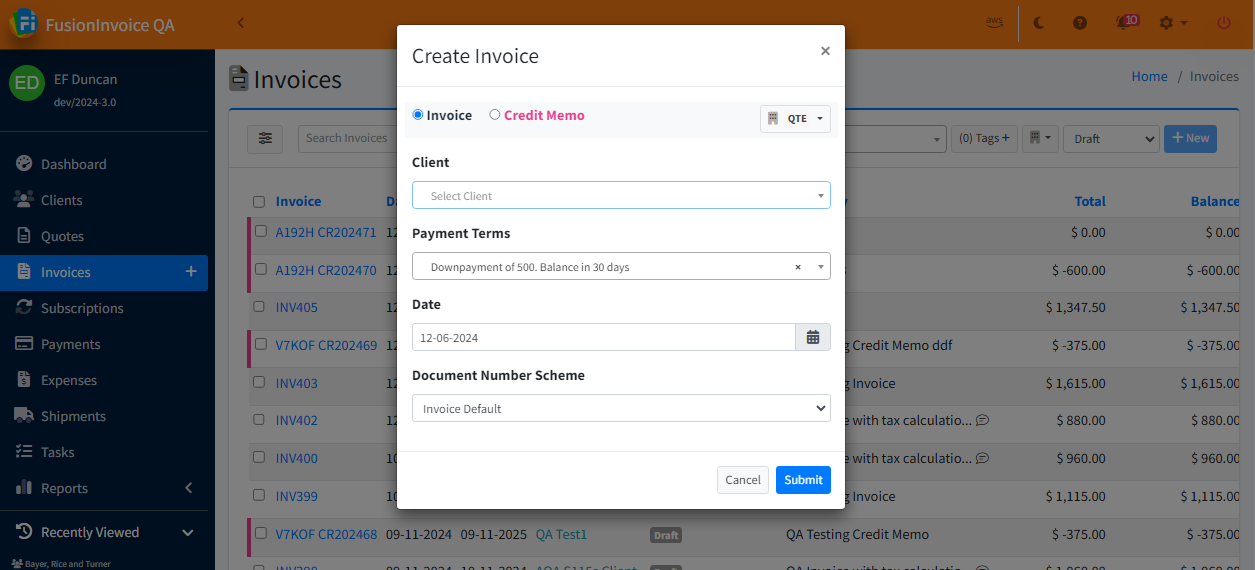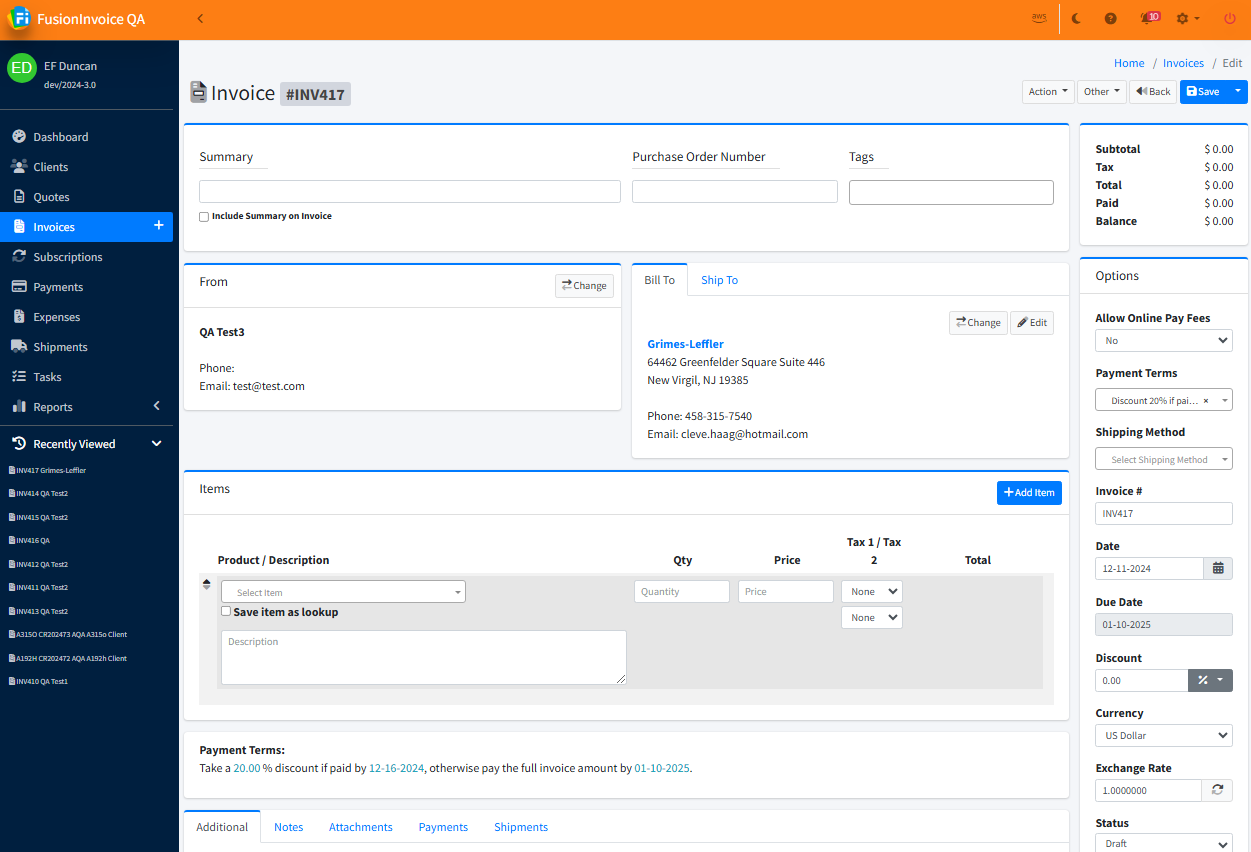Creating an Invoice
Click the Invoices menu item and press the New button.
The Create Invoice screen will prompt you for the Client Name, Invoice Date, Company Profile, Payment Terms, and the Document Number Scheme.
If the invoice is for a new client, type the client's name in full. You will be able to edit the other details for this client record from the next screen. If the invoice is for an existing client, start typing the client's name and you will be able to select your existing client from the list that appears.
The Date defaults to today's date but can be changed if necessary.
Select which company the invoice is coming from in the drop down at the top of the window.
Select the Payment Terms.
The Document Number Scheme controls the format of the number assigned to each invoice.
Press Submit when done and you'll be taken to the Invoice Edit screen.
Click here to learn more about the Payment Terms.
The Invoice Edit screen is where you'll add line items as well as define further properties and options for your invoice.
1. Summary
Entering a brief summary or description of the invoice will make the invoice easier to find and search for. There is also an option to include the summary on the header of the invoice.
2. From/To
The From and To areas display who the invoice is issued from and who the invoice is being sent to. If you created the invoice with the wrong company profile selected by mistake, you can easily change that by pressing the Change button on the From area and choose the correct company profile. Similarly, if you created the invoice with the wrong client selected, you can easily correct that by pressing the Change button on the To area and choose the correct client.
Ship to is for invoices where you will be shipping items to the client. Add the shipping address here.
3. Items
This is where you'll enter each of your line items. Press the Add Item button to add additional lines for your items.
4. Additional, Notes, Attachments, and Payments Tabs
Terms and conditions, as well as text to appear in the footer of your invoice, may be entered on the Additional tab. Defaults for these fields may be set in System Settings on the Invoices tab (default values for these fields will not appear on invoices already created).
Public or private notes may be entered on the Notes tab. Notes entered on this tab will be visible to clients viewing the invoice using the public link unless they are marked as private. Clients may leave notes on an invoice when viewing the invoice using the public link as well.
File attachments may be uploaded to an invoice on the Attachments tab. See Attaching Files to an Invoice for details.
5. Options
A number of other options and values are defined in the options area.
- Allow Online Payments- adds a link for the client to pay online
- Payment Terms - see payment terms
- Shipping Method- see shipping
- Invoice # - This is generated according to the Document Number Scheme selected when the invoice was created.
- Date - The date the invoice was issued.
- Due Date - The date payment on the invoice is due.
- Discount - A percentage based discount can be applied to the invoice.
- Currency - The currency the invoice will be issued and paid in. The default currency can be changed on both the client record and in System Settings. If the client record has a different currency than System Settings, the currency on the client record will override System Settings.
- Exchange Rate - If a currency other than your base currency is selected, the exchange rate will automatically update itself based on the current rate.
- Status - The current status of the invoice. Once an invoice has been emailed, the status will automatically update itself to Sent. Once an invoice has been paid in full, the status will automatically update itself to Paid. If you have printed an invoice for delivery, you can manually change the status to Sent.
- Template - This is the template the invoice will use when viewed using the public link or when generating the invoice PDF. The default template can be changed on both the client record and in System Settings. If the client record has a different default template than System Settings, the client record will override System Settings. This behavior allows you use a specific template as default for most of your invoices while specifying a different template for a particular client or clients.


